The 8 biggest Logistics Companies and their Initiatives towards a Better Environment
The growth of the logistics market is being driven by many factors, including the rapid expansion of the e-commerce sector, ongoing technological advancements, particularly in the realm of the Internet of Things (IoT), the continued globalization of trade, an increased emphasis on environmental sustainability, and rising consumer demand for expedited and efficient delivery systems.
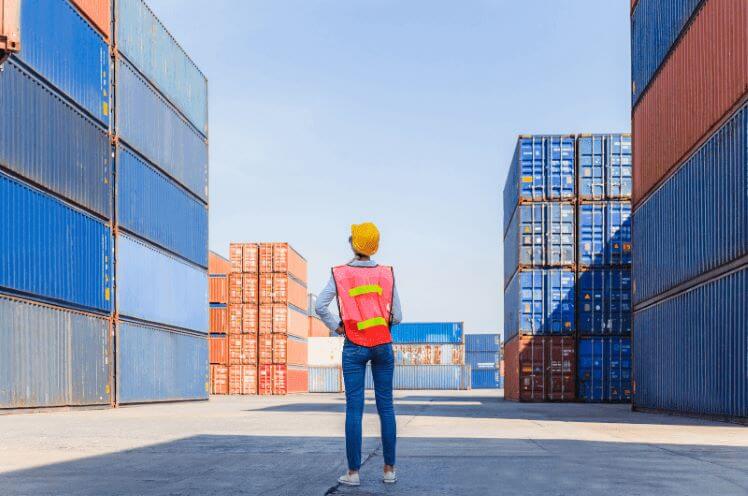
Source: www.canva.com
Tip: Not sure what IoT means? Find out more in our article about advanced technologies in logistics.
The global logistics market reached a significant milestone in 2023, with US $10.6 trillion, which is about the cost of building 26,500 Burj Khalifa towers, the tallest building in the world. Looking ahead, EMR Enterprise expects the market to reach a significant US $18.35 trillion by 2032 (equivalent to buying approximately 459 million Tesla Cybertrucks at their starting price of US $39,900), representing a 6.3 % compound annual growth rate from 2024 to 2032.
It’s also critical to note that, by 2028, the global market for logistics automation is projected to reach US $51.2 billion, up from US $32.7 billion in 2023, with a projected term compound annual growth rate of 9.3% (Logistics Automation Market, 2023).
Five companies stand out for their impressive revenue results in the logistics sector. These industry titans exhibited outstanding skills in handling the complex web of supply chains and transportation networks. These companies helped shape the global commerce environment by facilitating the seamless movement of freight and providing innovative logistical solutions. Let’s find out who they are and how long they have been in the logistics game.

Source: www.canva.com
1. United Parcel Service (UPS)
Founded in 1907, UPS is a multinational shipping and receiving firm specializing in supply chain management. At US $90.958 billion in sales annually in 2023 (which is almost Luxembourg’s GDP in 2023) and a profit of US $6.7 billion, UPS is the largest courier business in the world (macrotrends.net).
UPS began as the American Messenger Company, a telegraph-focused business that has expanded to rank among the Fortune 500. Today, UPS is most recognized for its ground shipping services and its retail chain, the UPS Store, which helps small businesses by offering tools and supporting UPS shipments.
UPS Mail Innovations and UPS SurePost, two services that forward items to the United States Postal Services for last-mile delivery, provide air shipping for overnight or two-day delivery to post office boxes.
Tip: Find out interesting facts about Last Mile Delivery.
Through its vast network, UPS, which has its headquarters in Atlanta, Georgia, connects businesses and consumers in over 220 nations and territories with ease. UPS is well-known for its distinctive brown delivery trucks and its catchy “What Can Brown Do for You?” tagline, which has come to represent dependability and accuracy.
UPS is a leader in sustainability activities outside of its core package delivery business. The business has made large investments in renewable energy, eco-friendly packaging, and vehicles running on alternative fuels to support the global movement towards environmental responsibility.
Fun fact: UPS has about 119,000 delivery vehicles globally, which range from bicycles to tractor-trailer trucks. Its ground vehicle has a normal lifespan of 20-25 years until its structural integrity is damaged (ups.com, 2023). Because the corporation does not resell any of its ground vehicles, decommissioned vehicles are virtually always stripped of usable parts before being crushed or broken apart.
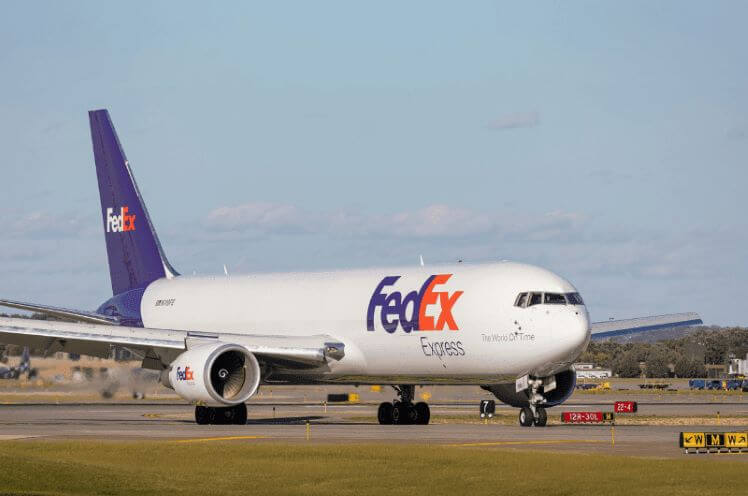
Source: www.canva.com
2. FedEx
Since its establishment in 1971, FedEx, a dominant force in logistics and courier delivery services, has left its mark on the history of international trade. FedEx, with a revenue of US $90.155 billion by 2023 (is the same as buying about 300 of the biggest cargo aircraft on the planet, Antonov An-225 Mriya cargo planes) and US $4.287 profit (profit for the twelve months ending November 30), ranks as the world’s second-biggest courier company (macrotrends.net). The company operates in more than 220 nations and territories and has cemented its position as a major force in express shipping as well as international trade.
Notably, FedEx was founded by Frederick W. Smith, who described an integrated air-to-ground system that would transform the transportation sector in a college term paper. FedEx is now defined by its vast air fleet and global logistics network, both of which were made possible by this innovative idea. The motto “Absolutely, Positively Overnight” became synonymous with the company’s commitment to on-time deliveries, creating a new industry benchmark.
FedEx declared in early March 2021 that it will make its operations carbon-neutral by 2040 (arstechnica.com, Jonathan M. Gitlin, 2021). It is investing US $2 billion in sustainable energy efforts, including US $100 million for a new Yale Center for Natural Carbon Capture, as well as upgrades to its aircraft and ground transportation fleet (msn.com).
FedEx’s current policies have helped them to avoid a significant amount of emissions. Their current fleet of electric cars and more efficient delivery routes have prevented around 950,000 metric tons of CO2 emissions. Furthermore, with the FedEx Fuel Sense program, FedEx saved around 221 million gallons (837 million liters, which is the volume of 335 Olympic swimming pools) of fuel and avoided roughly 2 million metric tons of CO2 (uschamberfoundation.org).
Tip: Find out more about going greener with electromobility.
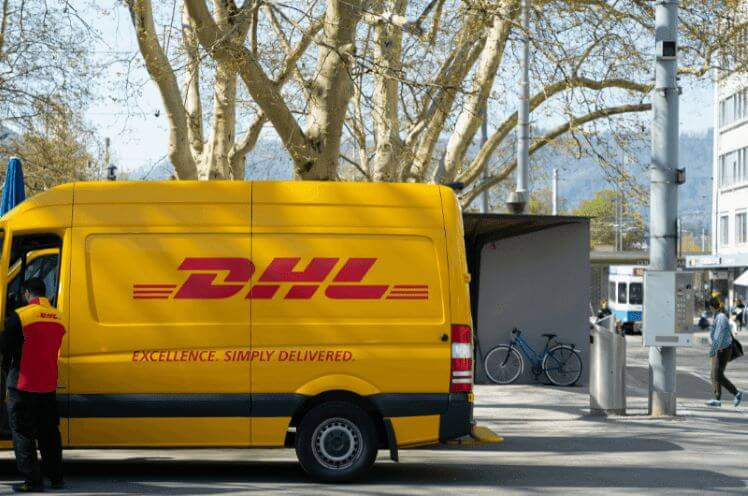
Source: www.canva.com
3. DHL Express
DHL (Dalsey, Hillblom, and Lynn) is a company that offers international postal, express, courier, logistics, and financial services. Adrian Dalsey, Larry Hillblom, and Robert Lynn formed the company in 1969. As the world’s third-largest logistics company, DHL posted excellent sales of US $90.82 billion and a profit of 4.349 billion in 2023, demonstrating its great influence in the industry. US $90.82 billion is nearly the same amount as over 2 million workers earning US $20 per hour, full-time, for a year.
DHL is presently owned by Deutsche Post DHL Group, a German logistics company.
The corporation wants to reach zero emissions by 2050, demonstrating its commitment to environmental responsibility. In December 2014, Deutsche Post DHL acquired StreetScooter, a small electric vehicle manufacturer, as part of its long-term goal of achieving zero emissions in its delivery operations. In 2021, DHL had more than 15,000 StreetScooter vehicles on the road, most of them operating in Germany. In the future, electric vans with substantially longer ranges will be necessary to replace the whole Deutsche Post and DHL Express fleet of around 70,000 vehicles with StreetScooter variants (Bloomberg, 2017).
Deutsche Post owns five airline businesses that operate for DHL Express, totaling over 250 aircraft and another 21 on order, together known as DHL Aviation.
Tip: Did you know DHL is expanding air freight transportation in South America?

Source: www.canva.com
4. The United States Postal Service (USPS)
USPS plays an important role in the American landscape, connecting citizens and companies across the country. Established in 1775, the USPS has played an important role in the nation’s communication and trade, adjusting to its inhabitants’ changing demands over the ages. As a result, it rose to fourth place in 2023, with a value of US $78.2 billion (about.usps.com, 2023). With this amount of money, you could easily purchase several professional sports teams across the NFL, NBA, and other leagues.
Although USPS has exclusive access to letterboxes marked “U.S. Mail” and personal letterboxes in the U.S., it must compete with commercial package delivery firms, such as UPS, FedEx, and DHL.
The USPS has one of the world’s largest civilian vehicle fleets, with over 220,000 vehicles. As the only service provider that delivers mail and packages to every location in the country, the USPS handles an incredible volume. Despite the rise of digital communication, the postal service remains a lifeline for millions, sending letters and deliveries to remote parts of the country. As of 2021, the USPS runs 31,330 post offices and locations in the United States, delivering 128.8 billion pieces of mail annually to 163 million delivery points.
In 2022, it announced ambitious intentions to acquire a large fleet of battery electric delivery trucks, with the goal of purchasing at least 66,000 electric vehicles by 2028. The USPS intends to replace its outdated delivery fleet of over 220,000 vehicles, with at least 75% of the estimated 60,000 Next Generation Delivery Vehicles (NGDV) being battery-electric (USPS, 2022).
These were four of the biggest logistics companies, which primarily focused on the freight delivery sector. There are other companies worth mentioning, even if their revenues are small (or huge in the first example).
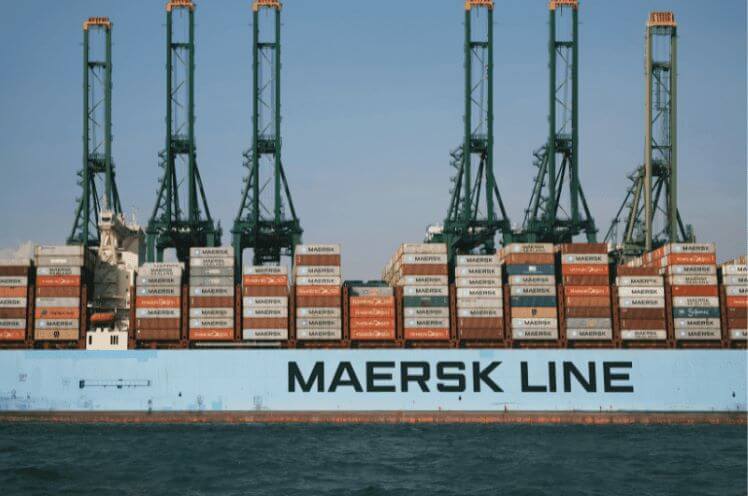
Source. www.canva.com
5. Maersk
A.P. Møller – Maersk A/S, usually known simply as Maersk, is a behemoth in the shipping and logistics sector. It has a history reaching back to 1904. The company was founded in Denmark and has played a significant role in the maritime industry for over a century. Over the decades, it has grown into the world’s largest container shipping corporation, as well as the largest in terms of fleet size, accounting for 18% of global fleet capacity. It means that nearly every fifth shipping container is transported by Maersk. As a logistics company, it ranks fifth with a revenue of US $51.1 billion in 2023 and a profit of US $2.7 billion (Maersk.com, 2024). With that, you could theoretically fund about 824 Falcon 9 rocket launches.
Maersk Company is responsible for more than 80% of the Danish top 30 corporations’ CO2 emissions from operations. It has raised emissions by 2% since 2019, bringing the total to 37 million tons in 2021 (finans.dk, 2022). The corporation aims to become CO2-neutral as early as 2040.
Notably, the business pioneered the creation of Triple-E vessels, the world’s largest container ships intended for maximum fuel efficiency and environmental sustainability. This commitment to green techniques is consistent with a broader industry initiative to reduce the carbon footprint of maritime transportation.
Fun fact about the Danish tax system: Danish shipping businesses have a one-of-a-kind tax policy called tonnage tax, which has been in place since 2001 to keep them on Danish land. Tonnage tax indicates that shipping businesses pay a fixed tax or charge per ship, which is unaffected by the company’s profits. The tonnage tax allows shipping corporations to dodge the traditional corporate tax of 22% that other businesses must pay. According to the company’s annual records, Maersk should have paid nearly 4% (US $643 million) of its record-breaking earnings of over US $16.08 billion before tax in 2021, but instead paid US $100.66 million, or 0.6%, to Denmark (Berlingske.dk, 2022).

Source: www.canva.com
6. Amazon
While Amazon has the highest revenue (US $574.785 billion in 2023) and profit (US $30.425 billion in 2023) compared to other corporations, the main business sector of Amazon is online retail, and logistics contributes to only a part of it (macrotrends.com). For example, in 2022, freight revenue contributed only 23% (US $117.7 billion) of the company’s total turnover.
Despite this, Amazon has indisputably transformed the e-commerce and logistics scene, establishing itself as a dominant player in both retail and delivery services. Jeff Bezos launched the company in 1994 as an online bookshop, and it has since grown into Amazon’s extensive ecosystem that encompasses e-commerce, cloud computing, artificial intelligence, and entertainment streaming.
Tip: Discover 5 benefits of cloud computing for your logistics.
Amazon’s logistics prowess is demonstrated by its extensive distribution network and excellent supply chain management, which allow the corporation to provide exceptional delivery times and customer satisfaction. Amazon Prime, with its one and two-day shipping choices, has redefined convenience in the e-commerce sector.
Fun fact: The arrow that connects A to Z in the iconic Amazon logo represents the company’s wide range of products, implying that they carry everything from A to Z.
Amazon is a trailblazer, influencing the future of retail and logistics as it explores new business models like drone delivery and cashierless stores. Even though logistics only make up a small portion of Amazon’s total revenue, the company has had an enormous impact on the logistics sector, cementing its place as a major player in the rapidly changing fields of technology and commerce.
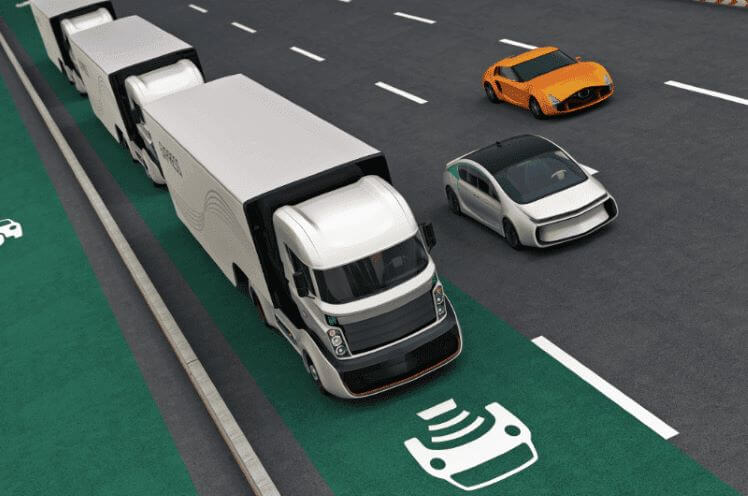
Source: www.canva.com
7. Einride
Swedish technology company Einride is dedicated to creating environmentally friendly transportation options, especially for the freight and logistics sectors. Even though the company was not founded until 2016, by 2019 it had already made history by becoming the world’s first company to operate an autonomous, electric freight vehicle on a public road.
The company’s Einride Pod, an electric autonomous vehicle made especially for freight transport, is its most well-known product. With its absence of a driver’s cabin, the Einride Pod is a major shift from traditional trucks in terms of lowering the logistics industry’s carbon footprint. These cars offer a flexible and effective way to transport goods because they are designed to run entirely on their own, but they can also be remotely controlled by operators when needed.
Einride’s revenue of US $5.5 million in 2022, cannot be compared to the revenues of more established global logistics companies (sifted.eu, 2023). However, in terms of pioneering fully electric and autonomous transport solutions with a strong focus on sustainability, Einride is a notable leader in the field.
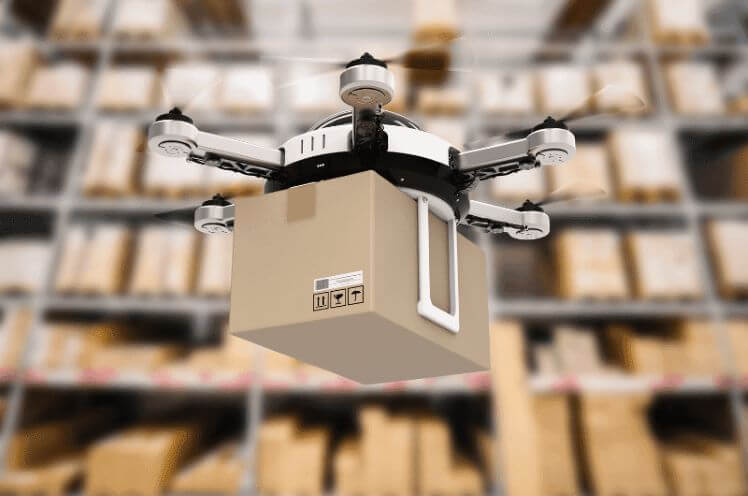
Source: www.canva.com
8. Zipline
Zipline, a pioneer in drone delivery, has risen to become the world’s largest corporation in this innovative industry. Zipline, founded in 2014, has revolutionized the logistics industry by utilizing drone technology to provide efficient and life-saving delivery services.
The organization focuses mainly on medical supply distribution and emphasizes its dedication to improving healthcare access, particularly in distant and difficult-to-reach places. The corporation has distribution centers in Rwanda, Ghana, Japan, the United States, Nigeria, Ivory Coast, and Kenya. As of November 2023, their drones had completed over 800,000 commercial deliveries, primarily focused on in-country distribution, and logged over 40 million autonomous kilometers (CNBC, 2023).
Zipline demonstrated its industry supremacy in 2022, generating approximately an impressive US $25.2 million in revenue (zippia, 2023). The company also provides non-medical goods delivery services, including collaborations with Walmart (which began in 2021) and Sweetgreen (which was announced in 2023). Its website includes options for restaurants, groceries, convenience shopping, and e-commerce.
Tip: Explore more advanced tech shaping the logistics industry.




